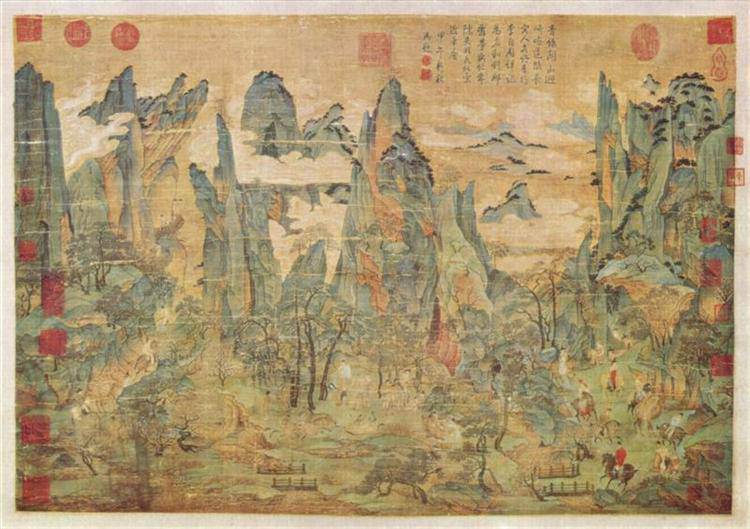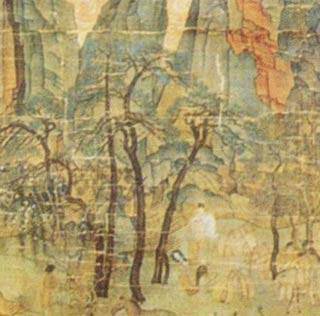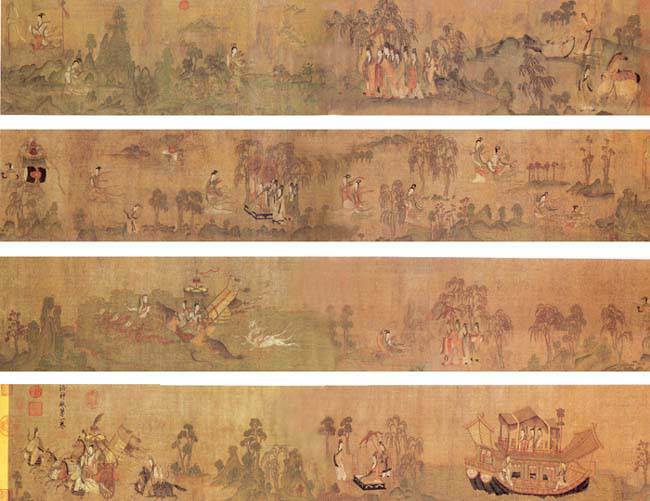Li Zhaodao · Ming Huang’s Journey to Shu

c.720-740 a.c. Ink and colors on silk, 55.9-81 cm. (22 x 31.9 inches). National Museum, Taipei (Taiwan)
The artists of the Six Dynasties (220-618 AD) like Xie He and the aforementioned Gu Kaizhi laid the foundations of Chinese painting, and then the painters of the Tang Dynasty (618-907 AD) formed the first Golden Age of Chinese Art, in which landscape painting was a key element.
Two main “styles” were developed during this period. One is the “ink and wash painting”, well represented by Wang Wei. The other style is known as “qinglu” or “blue and green landscape painting”, in which the best known figure is Li Zhaodao, to whom is attributed the very important “Ming Huang’s Journey to Shu” (also known as “The Emperor Ming Huang traveling in Shu”), known today thanks to three later copies, the most famous of them (probably created in the 10th century) in the National Museum of Taipei.
“Ming Huang’s Journey to Shu” is truly a blue and green landscape, created using mostly azurite and green malachite. The lower part of the silk shows a “friendly” landscape dotted with the figures of the riders and the trees. Over them, the impressive Sichuan Mountains dominate the scene, some of them emerging from the fog, a typical feature in Chinese painting.
Emperor Ming Huang was the seventh emperor of the Tang dynasty, reigning from 712 to 756 AD. Emperor Xuanzong’s Kaiyuan era is often considered one of the golden ages of Chinese history and culture. But in this work even such a powerful and important man cannot compete with the landscape, the undisputed main star of the painting.
G. Fernández – theartwolf.com

“Ming Huang’s Journey to Shu” – Detail of the painting
Follow us on:


